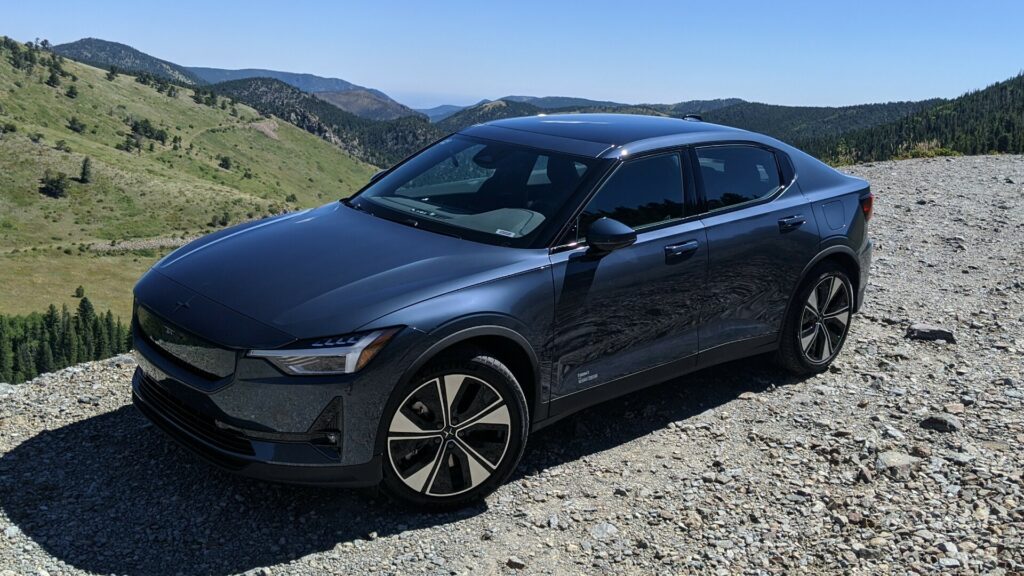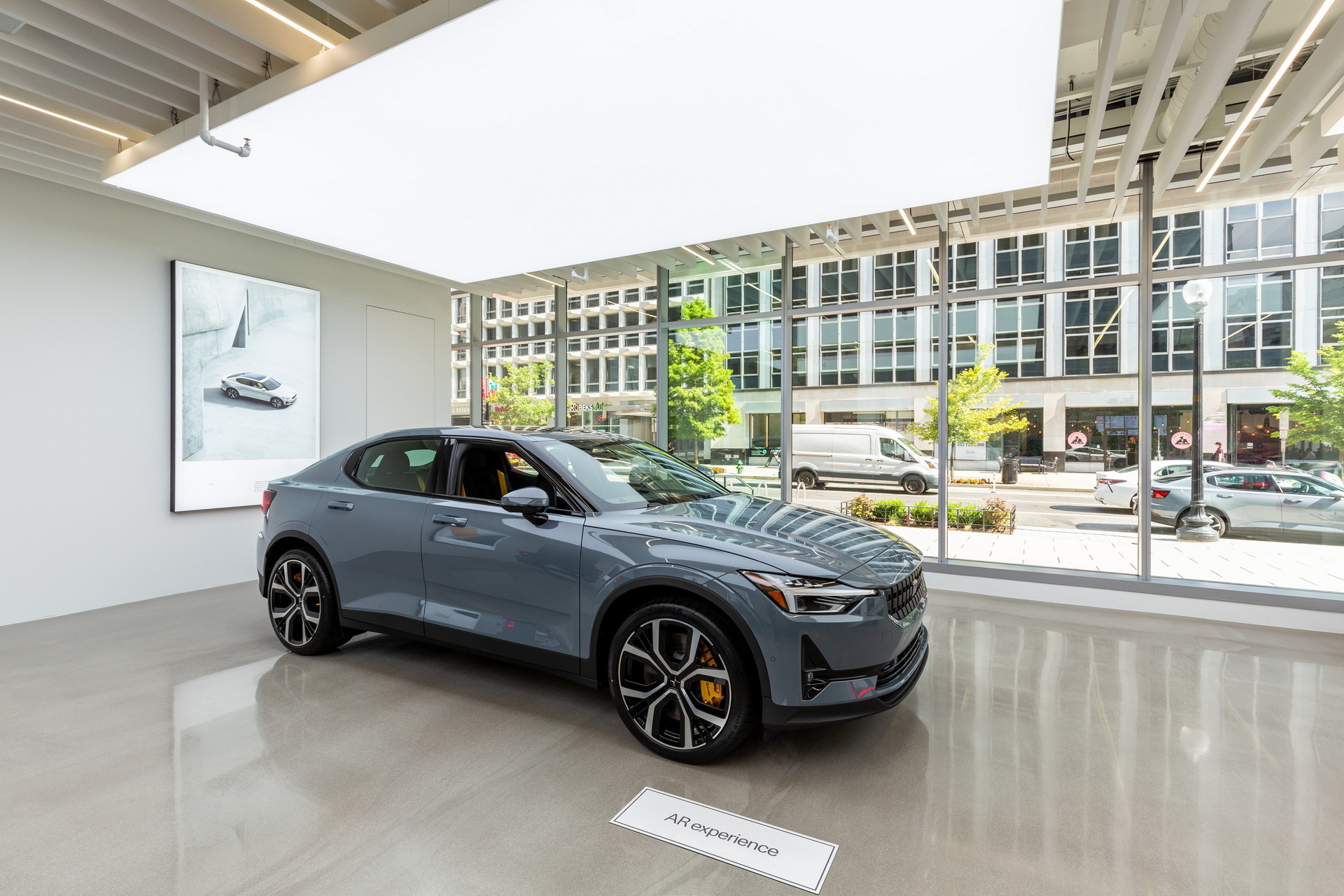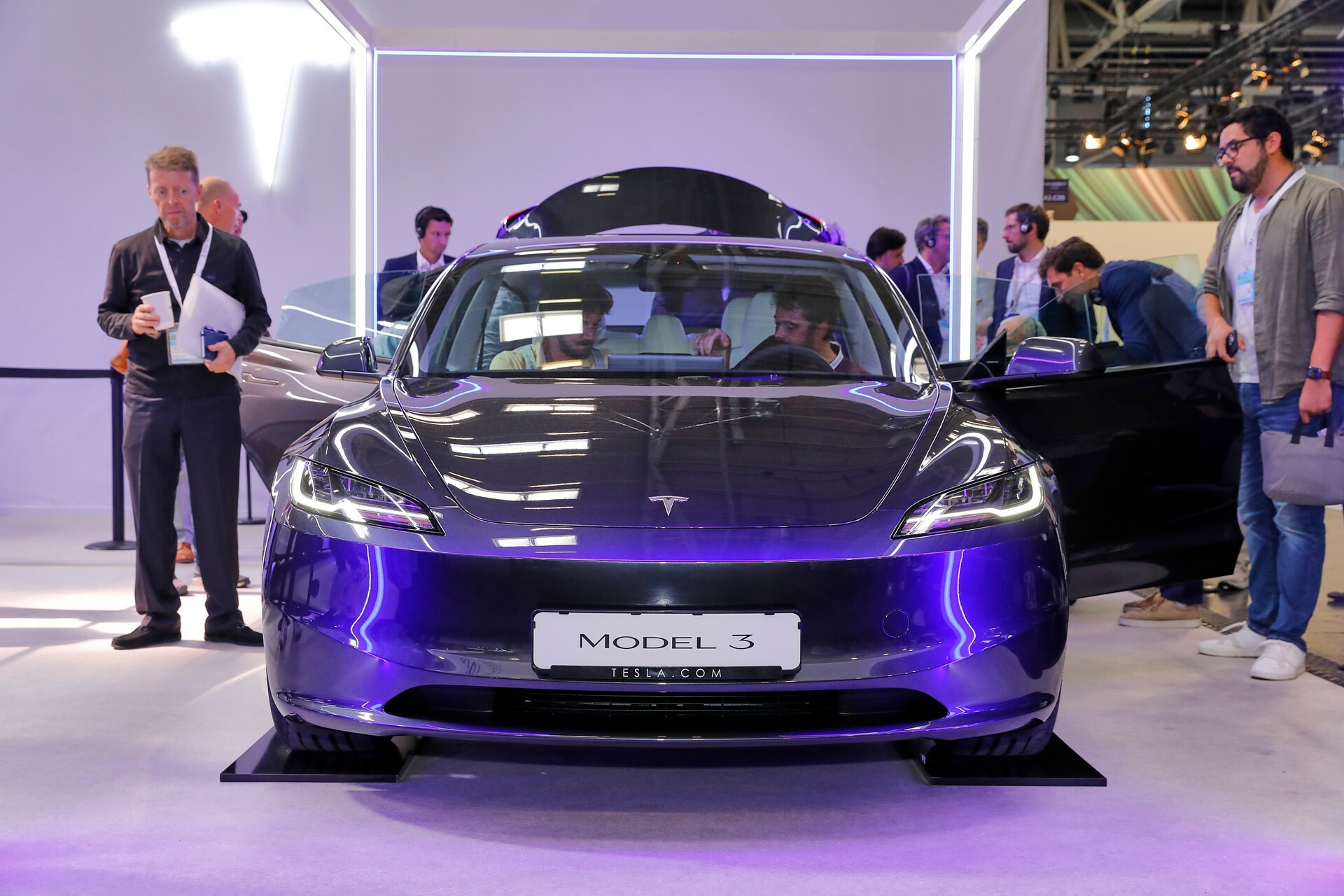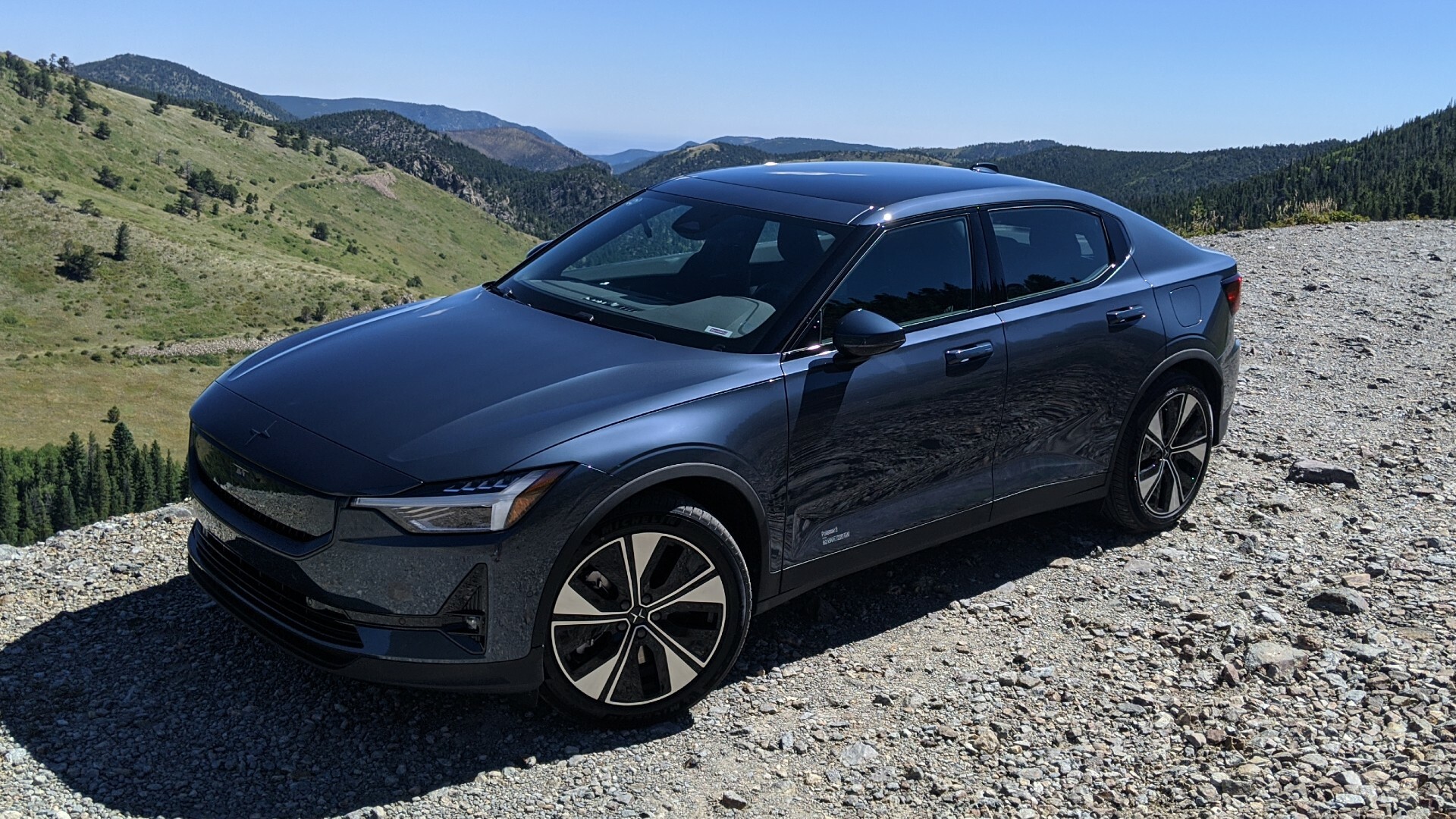Mid-cycle refreshes typically see stylistic changes to the exterior of a model, a few tech updates, and little else. The 2024 Polestar 2 kicks sand into the face of that convention with a serious set of updates and upgrades that might improve the base model more than any other. Gone is the front-wheel drive version of the 2 in favor of a rear-drive layout.
Dynamically, that promises quite a bit but in addition, the 2 Single motor gets more range, more power, and faster charging speeds too. The Dual motor benefits from similar improvements in range, charging speed, and torque. To find out if these changes make the Polestar 2 worthy of more attention we took it from downtown Denver, Colorado to Estes Park, a town sitting at over 7,500 feet of elevation.
Parts In The Front
Polestar fans themselves might find it difficult to tell the 2024 model from those that came before. The biggest giveaway is the new SmartZone which takes the place of the space that used to look like an open grille in the middle of the bumper.
Now, a flat panel fills the majority of that space in an effort to consolidate important tech into one central place. Polestar calls this a transition from how ICE cars needed to “breathe” to the way that EVs need to “see”.
In the Polestar 2, the SmartZone includes a forward-facing camera along with mid-range radar sensors. Future Polestar models will also feature the SmartZone though we expect the tech package to change as needed. Beyond that, the 2 looks nearly identical save for new available wheel designs.
Business In The Back
In fact, it’s under the skin and cabin of the Polestar 2 where the biggest changes lie. Until now, the base version of the 2 came with a single motor at the front of the vehicle and up to 228 hp (170 kW) and 243 lb-ft (329 Nm) of torque. It started at $49,800 and offered up to 270 miles (435 km) of range.
Now, for 2024, pricing starts at $49,900 but buyers get a more efficient and powerful motor that’s set up in the rear. It offers 299 hp (220 kW) and 361 lb-ft (490 Nm) of torque along with up to 320 miles (515 km) of range from its new-to-Polestar 82 kWh battery pack. In addition, the maximum charging speed has been bumped up to 205 kW. Those figures alone make the new Polestar 2 far more attractive both in terms of practicality and performance.
The Dual motor version gets some upgrades too. It sticks with the same 78 kWh battery pack from 2023 (and charges at the same 150 kW max) but improves thanks to more torque, at 546 lb-ft (740 Nm), up from last year’s 502 lb-ft (679 Nm). It also gets a more rear-drive-biased torque split for better driving dynamics. Interestingly, maximum power is actually down from 469 hp (349 kW) to 455 hp (339 kW). Despite that, Polestar says that this car is faster.
According to the automaker, it’ll do 0-60 mph in just 4.1 seconds when equipped with the optional Performance Pack. We get the feeling that those figures are likely conservative. For a more detailed breakdown of the packages available on the Polestar 2 see our breakdown here.
Nordic Interior Design
Slipping into the Polestar 2’s front seats is easy and offers a clear view. The power-adjustable front seats are supportive and feature a manually adjustable thigh bolster too. As is the case with most Scandinavian designs, the cabin is very clean and straightforward. The dash is completely asymmetrical with a large digital display ahead of the driver that teardrops down toward the far passenger side.
Some Polestar 2s feature real wood trim that feels great to the touch. Whatever trim one gets on the dash will also find its way into the center console area where a large portrait-oriented infotainment system features prominently. It leverages Google’s Android Automotive user interface and proved to be fast and easy to navigate in practice.
It also has clever little features like a pane that allows the user to adjust different volumes for different features in one place. Integration with Android and Apple devices is wireless and a wireless charging pad that sits below the screen is standard along with a pair of USB-C power ports.
That space sits inside of an almost equally prominent v-shaped divider that houses a cheap-feeling piano-black plastic space for the gear shift, volume control, hazards, and defrosters.
More: We’re Driving The Refreshed 2024 Polestar 2, What Do You Want To Know About It?
It’s the only bit of the interior that feels like it deserved more attention in the design phase. The piano-black plastic is only part of the problem. The area appears to float above the trim beneath it which calls into question just how easy it’ll be to clear should someone spill a drink into the area. On top of that, the area around the gearshift could likely house more controls to reduce the number of touchscreen button presses required for basic functions.
Behind the gearshift space, you’ll find one open cupholder and then a second hidden under a sliding armrest. Somewhat surprisingly, when that armrest is flipped up and back into the second-row space it has no purpose. That also feels like a missed opportunity to perhaps offer a fun little something for the back-seat passengers.
The folks in the back don’t really need any entertainment though we suppose. The seats are comfortable enough. Headroom and legroom are perfectly adequate for most passengers though taller folks will need to bend their neck or slouch to fit. The rear seat space also offers climate control vents, heated rear seats, and a pair of USB-C power ports.
Cargo room is outstanding despite the fact that the Polestar 2 doesn’t have a gigantic frunk. Under the hood, there’s space for a charging cable, a tire inflation kit, a jack, and not too much else, though a small bag or two would fit. The trunk is where things change for the better.
Polestar, like its partner Volvo, offers a number of clever features when it comes to practical storage. That includes a passthrough from the trunk area to the main passenger compartment, a cargo cover, a trunk divider, multiple cargo tie-downs, anchor points, and a somewhat hidden under-trunk compartment with enough space to fit at least two full backpacks.
It’s not the only clever storage space either. Both the front passengers have a small pocket as part of the center tunnel. The glovebox features a flip-out hook that can hold a bag to keep it from rolling around on the floor. There are fun easter eggs too like a Polestar logo that reflects into the available panoramic glass roof from a small jut out in the ceiling. The cabin of the Polestar 2 manages to be comfortable, practical, and even a little fun.
Dynamic Driving For All
When Polestar offered Carscoops the chance to drive the new 2 it called this the “Dynamic” launch of the car. That was a curious way to put it as, by the time we drove it, some customers already had their 2024 model. Now that we’ve driven it, we have a better understanding of the brand’s thinking. This year might only mark a mid-cycle refresh by most standards but the truth is that it’s a totally different car in terms of the way it drives.
The Single-motor version offers the most obvious shift. The extra 67 hp (49 kW) and 118 lb-ft (160 Nm) of torque shifts the attitude of this sedan but the switch to rear-wheel drive does even more. Now, the Polestar 2 feels like it’s verging on the edge of being a serious sports sedan. The steering is variable from Comfort to Normal to Sport and we prefer the latter as it’s tight, sharp, and makes the 2 very easy to command.
Throughout the countless turns that wound us from Denver to Nederland to Estes Park, the 2 was flawless in the way that it followed direction. The accelerator and brake pedal are both easy to modulate and provide feedback that feels matched to the driver’s input. Body roll is almost non-existent to the point that the seats could use more bolstering to keep the driver in place.
The Dual-motor version offers the same tight handling and excellent pedal feedback but a far more forceful response. Without the Performance pack, it’ll make 421 hp (310 kW) and 546 lb-ft (740 Nm) of torque but we didn’t have a chance to drive such a 2. Instead, we got the full-fat Dual-motor Performance pack version with 455 hp (335 kW) and the same amount of torque.
It’s properly fast and offers every bit of sporting oomph that the average driver will ask for. Again, we’ll say that Polestar’s 0-60 estimates for both the single and dual motor feel conservative though without the proper testing area we couldn’t confirm that.
If there’s anything that detracts from the Dual-motor it’s a distinct feeling in the turns that it’s heavier (about 220 lbs (100 kg)) than the Single-motor version. Despite that, it’s a very practical car with a true one-pedal driving mode and excellent driver aids that are smooth and confidence-inspiring.

Regardless of how many motors any particular example of the 2 has, the ride quality is smooth and rewarding. Polestar doesn’t offer drive modes in the 2 and that’s a good thing as it means that changes one makes are persistent between drives. Did you set the steering to firm? It’ll stay that way. The same goes for climate control settings like the ventilated front seats.
In terms of efficiency, the Single motor version that we tested averaged 25.2 kWh/100 miles. That’s actually less than Polestar’s own estimate of 29-32 kWh/100 miles. The Dual-motor car saw an average of 32.3 kWh/100 miles which is also better than publicized figures of 35 kWh/100 miles.
Unlike in past EV tests where we’ve seen automakers charge up their cars at the mid-way point of the day, Polestar didn’t do that. These cars all made it from Denver up into Estes Park and back without needing a top-up. On a map, that’s around 175 miles but doesn’t account for traffic or the somewhat questionable way that some journalists might treat a press car.
While some EV automakers might be facing flack for questionable range estimates, we get the feeling that the Polestar 2 can reach and probably beat its published numbers so long as the driver isn’t a total dolt. In short, it’s simply not fair to any Single motor Polestar 2 from 2023 or before to compare it to this latest model. Those older cars can’t hold a candle to the 2024 edition.
A Faster Dark Horse
There aren’t too many all-electric four-door sedans on the market here in the States so it’s clear what Polestar 2 is up against, namely, the Tesla Model 3. The American sedan benefits from a lot more brand presence in the head and heart of the general public. At the same time, there are seemingly just as many people out there willing to chide Tesla for its CEO’s decision-making. That might make the Polestar 2 a more attractive dark horse to some.
In fact, on paper, the Model 3 has a few distinct advantages. It’s slightly cheaper, starting at $40,240 (as of this writing). The Performance version is roughly $10,000 less than Polestar’s equivalent 2. It’s slightly faster too as the RWD version goes from 0-60 mph in 5.8 seconds vs. Polestar’s claim of 5.9.
The Performance mode dispatches the same feat in 3.1 seconds vs. the Polestar 2 Long Range Dual Motor Performance Pack’s best time of 4.1 seconds. Then there’s Tesla’s Supercharger network which takes the guesswork out of the charging experience away from home.
Despite all of these advantages, the case could be made that the Polestar 2 is still the better car to own and drive. The build quality is a serious step above the Model 3. The ride quality is excellent too and the cabin is tranquil aside from the tire noise that all electric vehicles deal with. The styling is far more subtle too.
There’s an elegant simplicity in its nature and that’ll likely appeal to those who scoff at the idea of having a Tesla badge in their garage. The combination of quality, practical performance, and craftsmanship make the Polestar 2, to us, a car quite worthy of more attention than it gets.





































































































